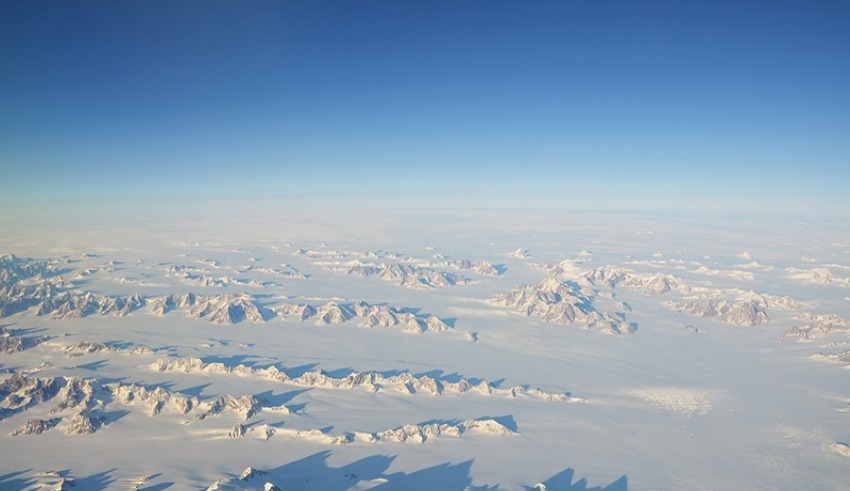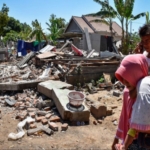
According to a study that was published on Monday, zombie ice that originates from the huge ice sheet that covers Greenland would eventually contribute at least 27 centimeters to the overall rise in sea level (Aug 29).
Doomed ice, also known as zombie ice, is ice that is still linked to thicker regions of ice, but it is no longer receiving nutrients from the bigger glaciers that it was formerly attached to. This is occurring because the parent glaciers are receiving less snow that can be used to replenish their snow stores. Meanwhile, the ice that is destined to melt is melting because of climate change, according to William Colgan, a glaciologist at the Geological Survey of Denmark and Greenland. Colgan was a co-author of the study.
“It’s a sheet of ice. Colgan stated in an interview that it will just melt away and vanish from the ice sheet. Regardless of the climate (emissions) scenario we choose at this point, this ice has already been doomed to melt into the ocean.”
Jason Box, a glaciologist working for the Greenland survey and the study’s principal author, described the situation as “more like one foot in the grave.”
According to the report, the inescapable 27 centimeters of sea level rise is more than twice as much as what scientists had previously anticipated would result from the melting of Greenland’s ice sheet. According to the research published in the journal Nature Climate Change, it might be as much as 78 centimeters. In contrast, the Intergovernmental Panel on Climate Change published a report the year before that estimated a range of 6 centimeters to 13 centimeters for the expected rise in sea level due to the melting of Greenland ice by the year 2100.
As part of the investigation, the researchers looked at how the ice affected the overall equilibrium. Snow that accumulates in the higher elevations of Greenland’s mountains eventually makes its way to lower elevations, where it both recharges and deepens the glaciers’ sides, therefore maintaining a state of perfect equilibrium. However, over the past few decades, there has been a decrease in replenishing and an increase in melting, which has led to an imbalance. According to Colgan, the authors of the study calculated that 3.3% of Greenland’s total ice volume will melt regardless of what happens with the world’s efforts to cut carbon pollution. They arrived at this conclusion by comparing the amount of ice that is being added to the amount that is being lost.
Colgan used the adjective “starving” to describe the condition of the ice, and he thought it was an apt description.
Related Posts
One of the authors of the study stated that the warming ice sheet’s incapacity to replenish its margins had already destined more than 110 trillion metric tonnes of ice to melt. If all of this snow and ice were to melt into water and be concentrated just over the United States, then the water level would be 11 meters higher than it is currently.
Greenland is one of the two major ice sheets that are steadily retreating due to climate change caused by the burning of coal, oil, and natural gas. This is the first time that scientists have estimated a minimum ice loss – and the corresponding rise in sea level – for Greenland. For the purpose of calculating the minimum amount of ice that will be committed to melting, the researchers employed a tried-and-true method similar to the one that is typically used for mountain glaciers.
Richard Alley, a glaciologist at Pennsylvania State University who wasn’t a part of the study but thought it made sense, compared the committed melting and sea level rise to an ice cube being placed in a cup of hot tea in a warm room. He said it’s the same thing as having the ice cube in a warm room.
“You have lost a significant amount of mass from the ice,” Alley expressed her thoughts in an email. “In the same way that your ice cube melted when it was placed in warmer tea, the majority of the mountain glaciers across the world and the margins of Greenland would continue to lose mass even if temperatures were stabilized at contemporary levels. This is because they have been exposed to warmer air.”
Even though 27 centimeters doesn’t seem like much, that’s the average for the entire world. According to Ellyn Enderlin, a professor of geosciences at Boise State University, this amount of sea level rise “will have huge societal, economic, and environmental impacts.” Because some coastal areas will be hit with more, and high tides and storms, on top of that, could be even worse, this amount of sea level rise “will have huge societal, economic, and environmental impacts.”
According to two ice scientists from other institutions, Leigh Stearns of the University of Kansas and Sophie Nowicki of the University of Buffalo, time is the most important unknown in this situation and a bit of an issue with the study. However, in the very last sentence of the report, the authors mention the phrase “within this century” without providing any evidence to support their claim, as Stearns pointed out. The researchers in the study stated that they were unable to determine when the committed melting would occur.
Colgan reacted by saying that the team does not know how long it will take for all of the doomed ice to melt, but that an informed guess would indicate that it will probably happen before the end of this century or at least by 2150.
According to what Colgan has said, this is actually the best possible outcome. A significant amount of ice melted in the year 2012, as well as to a lesser extent in 2019, and this occurred during a time when the equilibrium between adding and deleting ice was most unbalanced. According to him, the melting of Greenland could cause an increase in sea level of 78 centimeters if the Earth continues to see more years like 2012. He said that years that seem normal now would have been considered excessive fifty years ago. Those two years seem extreme now, but years that look normal now would have been extreme fifty years ago.
Colgan explained the process of climate change by saying that this is how it works. “The extremes of today will become the norms of tomorrow.”





























